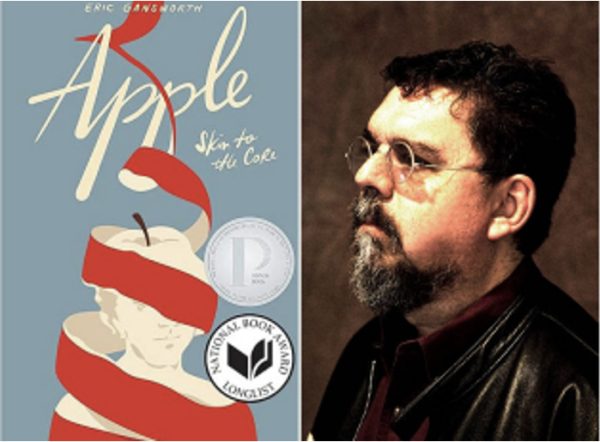Beyond The Grave
By Alexis ApfelbaumAssistant Arts & Features Editor
Though in our modern day and age, where nothing seems to be enough and one can have their remains rocketed into space and spend eternity as part of the black hole or a cosmic constellation – there is still something strikingly sanctified, if not a little spooky, about an age-old cemetery. The word cemetery comes from the Greek word koimeterion, literally a “sleeping place” or “dormitory.” Some, like “Alan,” author of http://www.vintageviews.org/jokingly compare the two, saying: “Just like college housing directors, cemetery operators seek to cram as many bodies into as little space as they can. Cemetery decorations and upkeep, however, are usually much superior to those of dormitories and seldom subjected to damage by the residents.” Coming from a college campus, we can readily chuckle over the seemingly humorous comparison, but cemeteries deserve our somber attention. Indeed, each society across the globe and through the centuries has its own cemeteries and burial rites (because they are so closely tied to death) as intrinsic parts of their culture. The Persians would call their cemeteries “The Cities of the Silent.” The Jewish people, many of whom do not believe in an afterlife, considered their cemeteries as sanctuaries for people, like Snow White pre-dashing prince,in an eternal sleep. All cultures, though, seem in awe of the sanctity which accompanies a graveyard and its aura of death. The Greeks thought it unlucky to even say the word “death” out loud. Some Colgate students seem to harken back to this realm of thought (and fear) when asked about Colgate’s cemetery sitting serenely atop our momentous hill. Colgate’s cemetery, located as high up as you can get, perhaps in an attempt to touch the heavens, is situated just past the Chapel House. Colgate archives date that the first interment in its cemetery occurred for Edward E. Whipple, class of 1838. At first it was created for the burial of students who lived far from home, then it was soon expanded to include faculty, alumni and staff. A small graveyard it remains; nevertheless, it’s an extremely diverse one, bearing on its aged tombstones Hebrew writing and Jewish stars,majestic Celtic crosses, as well as a plethera of Christian emblems invoking “Our Lord Everlasting.” While most graveyards are quite serene and peaceful during the day, Colgate’s cemetery proves itself to be utterly breathtaking. Viewed against the rising red and orange trees, whose gnarled branches are only just beginning to lose theirvibrant leaves, the gravestones rise up high – huge marble structures soaring towards the sky. Other stones, humble and small, sit low to the ground, saying merely: “Mother” and “Father” across their scarred and aged tombstones. This is all very beautiful during the daytime; an ethereal moment or two can be caught when sitting among the graves, looking at dates hundreds of years back, reminiscing of the people who now lay entombed, of their lives – some incredibly long, others terribly short– and how remarkable this thing of death (and thus, of life) is. Yet, in the dark, it becomes another story. Thoughts of ghouls and goblins can’t help but beset one. And since this is the Halloween issue of The Maroon-News, we might as well elaborate … During the 14th century, somewhere in Europe, there was a huge flood in one of the largest cemeteries at the time. All the graves had to be evacuated, because they were filled with water. When they took the coffins out and opened the lids, they found claw marks inside over a quarter of the coffins. They discovered, then, that they had been burying people alive: they had assumed those that were merely unconscious for the time being had already left this world, and they had promptly inserted them six feet under. Here’s the fun part. Because here is where terminology we still use today began. For example, the Irish wake, which is where the dead body is watched over by candlelight the night before the funeral, did not necessarily derive from familial love, but rather from the necessity of ensuring that the person was really dead. So too, it is said that a piece of twine was tied around each buried persons hand, and that twine led out of the grave to a bell. The person who would watch for the bell to ring would be a man on a “graveyard shift,” and if the bell rang and the buried alive person was rescued, that person would literally be “saved by the bell.” Not all cemetery stories are ironic or historical, however. Some are just downright horrific. Fortunately, however, on Colgate’s campus, there have been no documented accounts of zombies wandering around, emerging out of the graves; no half-dead professors, with deteriorated book in hand, back to make Colgate students learn calculus the hard way. However, for first-years especially, the graveyard remains an eerie presence in an otherwise placid Colgate experience. Says first-year Kyla Dzwilewski: “I live really near the graveyard, which is okay, I guess. As long as I don’t walk there at night. If I did, believe me, I’d be freaking freaked out of my freaking pants.” Fellow first-year Sarah Reichart agrees: “When I first heard I would be living so near a graveyard, I was a little scared, to be honest.” And while many are a little fearful of the Colgate cemetery, few even know it exists. Those who do, however, are quick to attest for its beauty, distrusting any ghost stories they might have heard about angry alums, or mothers in long nightgowns treading softly across the Colgate quad in the wee hours of the morning.Says sophomore Sabrina Szklanny, “I highly recommend going to visit – it’s just so full of history; you wonder what accomplishments those buried were a part of.” She pauses, and smiles: “it’s not like now – all these cemeteries you see are so impersonal.” It’s true: there is something incredibly satisfying about an old cemetery, especially one, like Colgate’s, that is able to combine archaic tombstones with well maintained shrubs and lawns. It would make a more interesting story to ruminate on the haunted demons that traipse from one grave to another, and prey on frightened first-years. But that is simply not the case. Colgate’s cemetery is home to many who made important impacts on the Colgate community, and open to those who continue to make them. It is a sanctuary where history sleeps; it truly is a City of the Silent.



